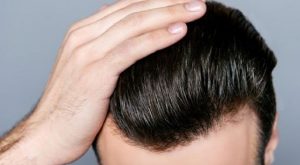 For decades men and women have attempted hair restoration procedures to achieve a natural appearance. Thanks to recent revolutionary advances, hair transplantation is now a greatly effective and permanent solution for men and women experiencing hair loss.
For decades men and women have attempted hair restoration procedures to achieve a natural appearance. Thanks to recent revolutionary advances, hair transplantation is now a greatly effective and permanent solution for men and women experiencing hair loss.
Hair transplantation is the only thoroughly proven way to permanently restore hair to your scalp’s thinning or bald areas. When performed by experts, today’s transplants are virtually identical to one’s own natural hair.
When your hair transplant has been completed you will be provided with post-operative instructions, medicines and shampoo. You will leave the office with a little or no bandage and will be able to shampoo your hair the next day.
Most patients resume normal activity in a day or two. Tiny crusts will form where the transplants have been placed and usually shed in 4 to 7 days. The small hairs in the newly transplanted grafts normally shed within 2 to 4 weeks after the procedure, and permanent hair growth begins in 8 to 12 weeks. You should expect significant cosmetic hair growth within 6 months and full hair growth within 9 to 12 months.
Only one or two procedures are usually enough to treat a specific area of hair loss. Potential future hair loss is taken into account when any hairline work is performed. The initial consultation between the patient and surgeon helps to individualize the hair restoration procedure to the patient’s hair quality and density, as well as their expectations.
Follicular Unit Extraction (FUE)
One of the newest and most talked about hair transplantation procedures is the Follicure Unit Extraction (FUE) transplant. This procedure involves a totally different approach to extraction that pinpoints individual hair follicle grafts from the donor area. This is different from the traditional surgical method of linear strip extraction. Where a strip of tissue from a donor area that contains hair follicles is removed. The area is sutured together. The removed tissue is then dissected down to “grafts” or better known as follicular units that contain one to four hairs. Microscopic incisions are made and the individual follicular units are placed in each incision. There will be a faint linear scar in the donor site.
Who Would Be a Candidate for FUE?
Patients who might benefit from the FUE transplant procedure would be someone to prefers to wear their hair very short in the back or whose donor area is limited due to tightness of the scalp or tend to heal with wide scars after suturing. It is important to be evaluated by a transplant doctor to determine if you are a good candidate for this method or if you would need the strip method of hair transplantation.



